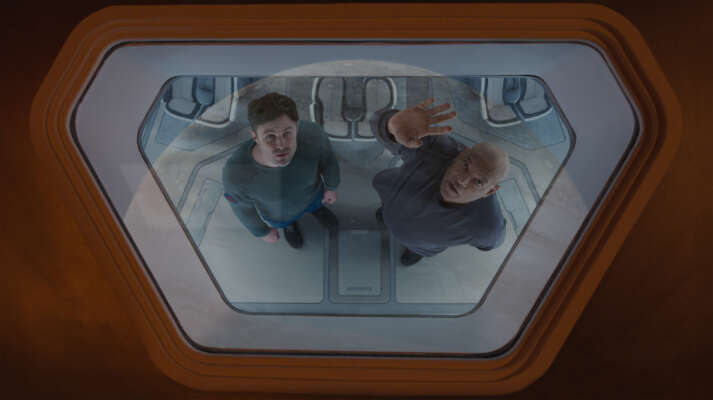Overcoming Adversity
Unforgettable stories about people whose courage continues to inspire us
Overcoming Adversity
Written by Peter Bowen
Andy Serkis’ Breathe brings to the screen an inspiring story about overcoming adversity. Contracting polio as a young man, Robin Cavendish (Andrew Garfield) was rendered almost completely paralyzed. The medical world offered little hope, other than confining him to a hospital for the rest of his life. But with the love of his wife Diana (Claire Foy) and his friends, Cavendish finds a way to not only leave the hospital, but also travel abroad and live freely with his family and friends. Screenwriter William Nicholson explains, “The thing I responded to most was that because of his condition, he was faced with a choice the rest of us are not.” Refusing to surrender to such adversity, Cavendish “made an active choice to live,” adds Nicholson. Garfield was equally moved by Cavendish’s spirit. “It felt like a road map of how to live,” notes Garfield. “How do you live a life of joy with the hand that fate deals you?” Breathe’s remarkable story joins a canon of great films, recounting how real-life people facing unthinkable challenges found the courage to go on and accomplish extraordinary things.

The power of the imagination in The Diving Bell and the Butterfly
In The Diving Bell and The Butterfly, director Julian Schnabel finds an unexpectedly cinematic way to realize Jean-Dominique Bauby's memoir of the same name, a book written after a massive stroke reduced him to the medical condition of locked-in syndrome. Unable to move anything by his left eye, Bauby worked with a therapist to devise a way to communicate by going, wink-by-wink, through the alphabet. With this system, Bauby recounted his life’s story at the glacial pace of one letter at a time. Initially the film, which was adapted by Ronald Harwood, was to star Johnny Depp, who recommended Schnabel to direct. When Depp dropped out, Schnabel stayed with the project, eventually casting French actor Mathieu Amalric as Bauby. For Schnabel, the project had become very personal. “I had no intention of making this movie,” Schnabel tells The Guardian. “I'd been terrified of death my whole life…So I made this movie and you know, I'm not scared to die.” Schnabel found Bauby’s example to be deeply life affirming. “You realize that you can actually do something if you have an interior life,” explains the director to NPR, “that people can have all their faculties, be perfectly healthy and not be alive at all.” The film, which went on to be nominated for four Academy Awards and win a place on scores of top ten lists, was celebrated for the way it lyrically captures the powerful resiliency of Bauby’s inner life. As Salon notes, the film proves “that our capacity for joy, and our ability to process it through whatever senses are available to us, are more durable than we think.”

Finding one’s voice in The King’s Speech
In some ways, the making of The King’s Speech is as remarkable as the inspiring tale it tells. What started as a stage reading of a passion project in a small London theater ended up as a runaway critical and commercial hit that was nominated for twelve Academy Awards, winning four of them––Best Picture, Best Director (Tom Hooper), Best Actor (Colin Firth), and Best Original Screenplay (David Seidler). For Seidler, the story of Prince Albert, Duke of York (Firth), overcoming his stuttering with the help of Australian speech therapist Lionel Logue (Geoffrey Rush) before leading his country as King George VI was deeply personal. Having developed a stammer as a young man from the trauma of losing his grandparents during the Holocaust, Seidler found hope in the King’s example. “‘Listen to the King,’ my parents would tell me, 'he was much worse than you,”’ Seidler remembers. In his screenplay, Seidler transformed this tale of a speech impediment into a historical lesson about a king finding his voice when his people needed him most. USA Today notes that “Firth's performance communicates the psychic agony of a painfully shy man thrust into a highly public position and paralyzed by the idea that an empire hangs on his every word”––as well as power to overcome it.

Dallas Buyers Club’s new lease on life
When Craig Borten first meet Ron Woodroof, the subject of Dallas Buyers Club, the part-time electrician rodeo rider seemed like a character from a movie. "He was this enigmatic character: wearing a cowboy hat, incredibly raw about women, about drugs, about AIDS,” Borten tells the Los Angeles Times. “I remember thinking 'This is bigger than life itself.'" Woodroof, a heterosexual cowboy who bucked the system to smuggle in drugs after he contracted HIV, was indeed a character straight out of the American imagination. After 20 years, many drafts, different directors, and different actors, Dallas Buyers Club––directed by Jean-Marc Vallée with Matthew McConaughey as Woodroof––finally hit theaters. Beneath the character’s bluster and outlaw persona, McConaughey discovered a remarkable human being who overcame his own fears by helping others. In a strange way his disease gave him a new lease on life. “That was the first time when he had purpose in his life, ironically because he was having to fight for his life," McConaughey tells The Independent. Both McConaughey and his co-star, Jared Leto, ended up winning a Golden Globe, a SAG Award, and Oscar for their stirring performances. For McConaughey, the key to playing Woodroof was never pretending he was something he wasn’t. “Ron was never the saint carrying the white flag to Washington DC,” he told The Shortlist. “Yet people are seeing the humanity coming out of this guy, and enjoying the fact that they’re going, ‘I couldn’t stand him, but jeez, I’m rooting for him.’”

The Miracle Worker performs a miracle all its own
The name Helen Keller is now synonymous with overcoming adversity. But the story of this nearly unreachable deaf-blind child becoming an acclaimed spokesperson for people with disabilities can not be told without including Anne Sullivan, the teacher whose life is dramatized by Arthur Penn’s 1962 The Miracle Worker. William Gibson originally adapted Keller’s 1902 memoir The Story of My Life into a television drama for Playhouse 90 in 1957, before transforming that script into a Broadway stage production in 1959 with Anne Bancroft as Sullivan and Patty Duke as Keller. Encouraged by the play’s success, United Artists wanted to give this intense drama about how Sullivan got Keller to connect with the outside world the Hollywood star treatment. “We'll give you $5 million if you do it with Liz Taylor, $500,000 if you make it with Bancroft," the studio told Penn as a way to entice him to substitute his Broadway cast with known movie stars. But Penn stuck to his guns, keeping the play’s original spirit and players. The film became a sensation, landing the two stars on the cover of Time Magazine, as well as winning them both Oscars –– Best Actress for Bancroft and Best Supporting Actress for Duke.


